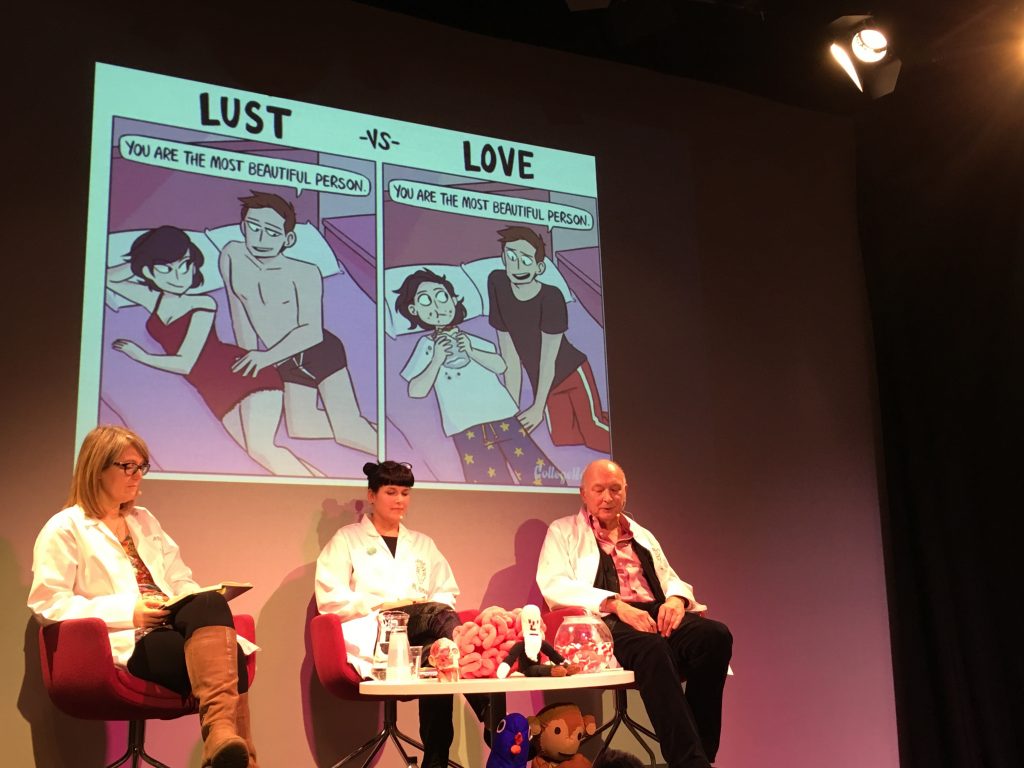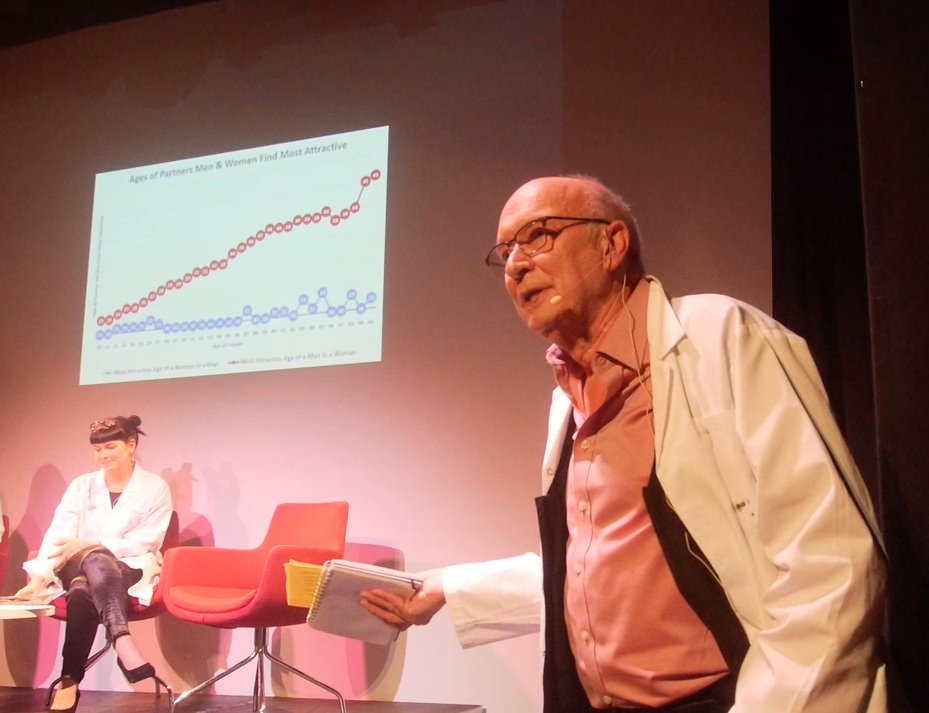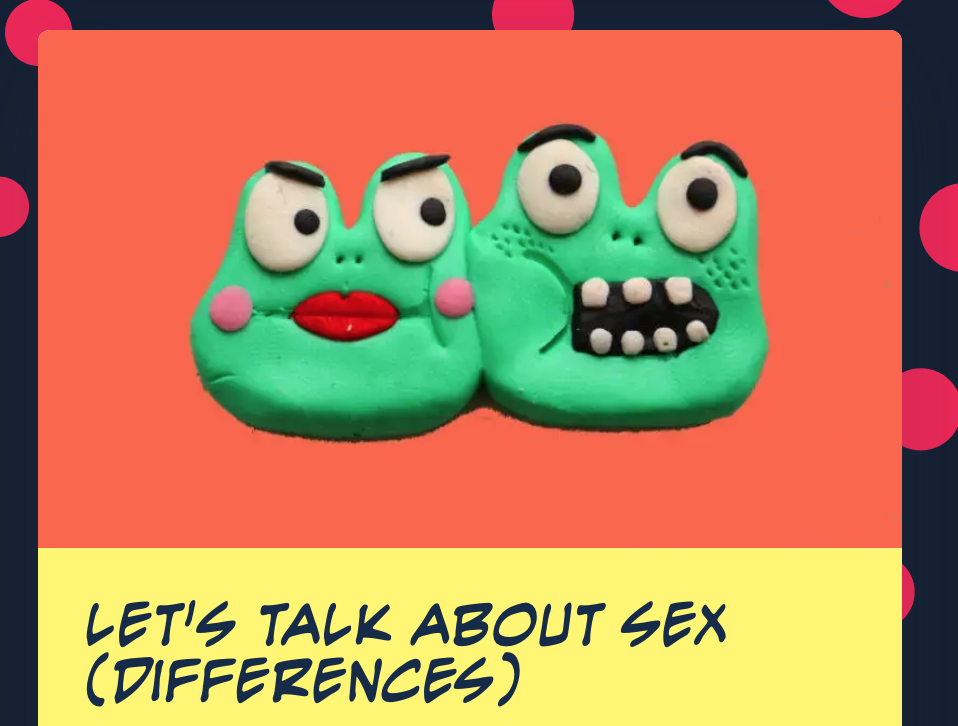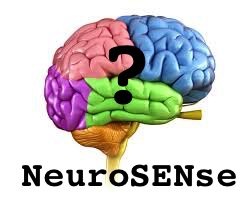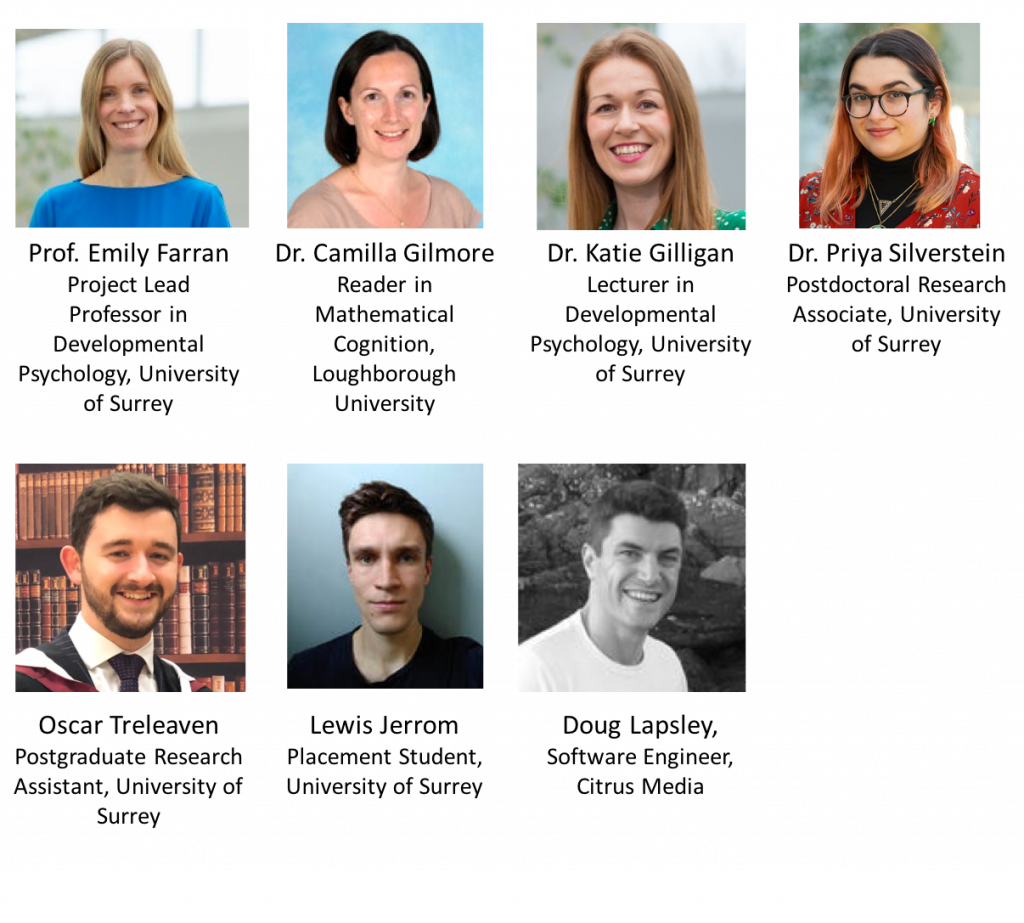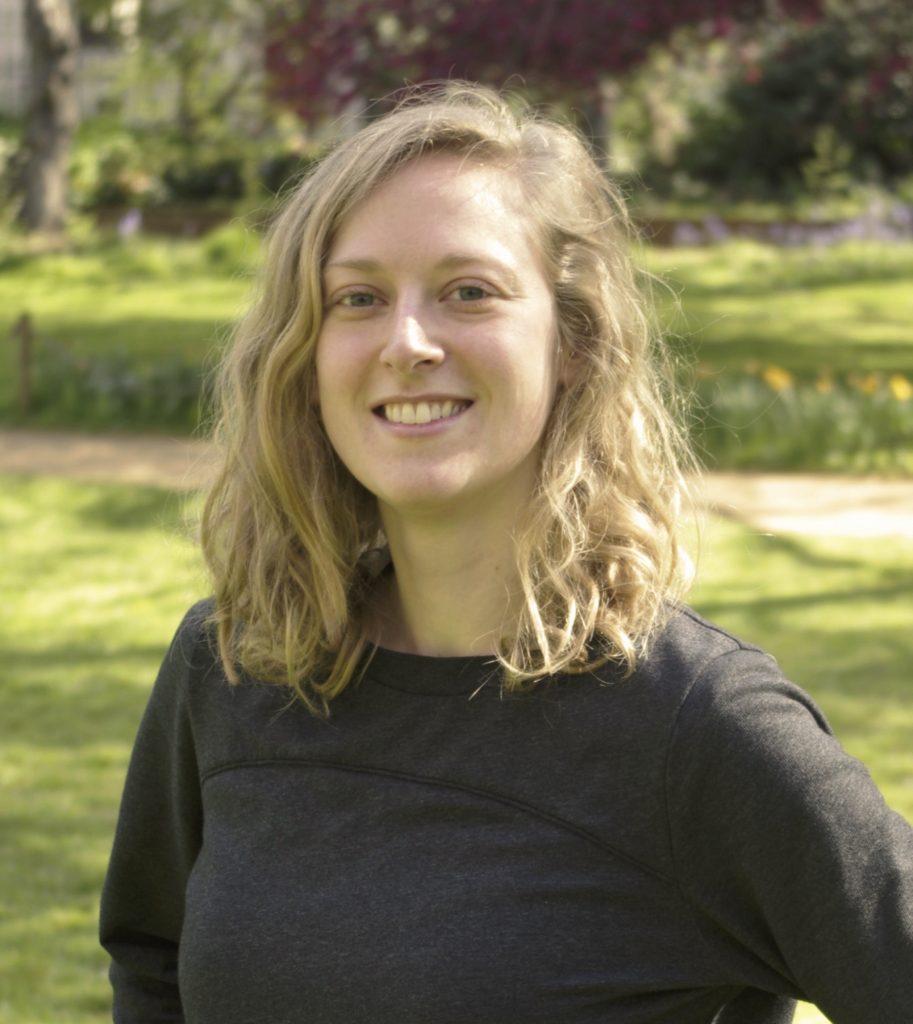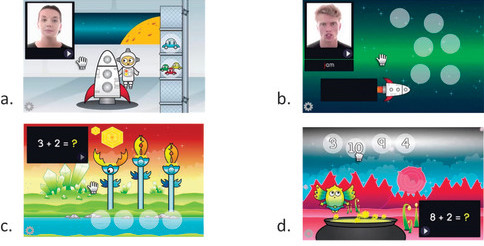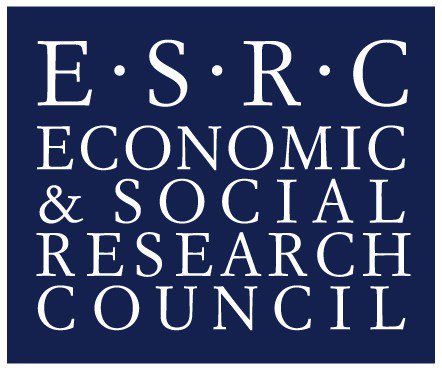Due to the exceptional circumstances of the COVID-19 virus we have decided to finish the current seminar series now. So the seminar scheduled on 26th March 2020 will not take place. We will reassess the situation after the Easter break, with the hope that the CEN seminar series will be able to run again next term, and will keep you updated.
Author Archives: admin
The Whole School Send Review
 Today, we have the pleasure to meet up with Margaret Mulholland again. Margaret is a SEND Inclusion Specialist and the Project Director of WHOLE SCHOOL SEND REVIEW, an exciting and timely new research project to help mainstream schools rethink SEN Support. We asked Margaret for some insight into why it’s so important for mainstream schools.
Today, we have the pleasure to meet up with Margaret Mulholland again. Margaret is a SEND Inclusion Specialist and the Project Director of WHOLE SCHOOL SEND REVIEW, an exciting and timely new research project to help mainstream schools rethink SEN Support. We asked Margaret for some insight into why it’s so important for mainstream schools.
Why get involved in the Whole School Send Review?
There is no shortage of discussion around the current state of the SEND system. For many, it is in crisis. In every school now there is an increasingly difficult dynamic between the ability to offer the right provision based on pupil needs and the need to satisfy academic targets. At the most basic level, declining year on year funding is limiting adequate resourcing and lowering teacher confidence about how best to meet holistic and academic needs of pupils with complex profiles. These are now familiar challenges that need good thought.
The Educational Endowment Foundation (EEF) has been working with the National Association for Special Education Need (NASEN) to roll out the SEND Review Trial. It’s a valuable research project to examine actual issues that schools face in delivering SEN support, and there is an opportunity now for mainstream secondary schools to get involved.
What is the Whole School SEND Review?
 The Review process was originally designed by the London Leadership Strategy (LLS) led by school leaders and itself born out of London Challenge. It has been rolled out by leaders and Local Authorities with very positive results. The EEF see it as a ‘good bet’ because it gets to the heart of addressing the dynamic of balancing additional support for pupils with SEND with designing a positive whole school strategy. In principle it provides a framework that helps school leaders evaluate the effectiveness of current SEND provision through a structured self-evaluation and peer review with another school. It’s an important study as there is a need for more evidence of the impact of a whole school approach to SEN.
The Review process was originally designed by the London Leadership Strategy (LLS) led by school leaders and itself born out of London Challenge. It has been rolled out by leaders and Local Authorities with very positive results. The EEF see it as a ‘good bet’ because it gets to the heart of addressing the dynamic of balancing additional support for pupils with SEND with designing a positive whole school strategy. In principle it provides a framework that helps school leaders evaluate the effectiveness of current SEND provision through a structured self-evaluation and peer review with another school. It’s an important study as there is a need for more evidence of the impact of a whole school approach to SEN.
Currently, tools for improving the progress of pupils with SEND often focus heavily on interventions and ‘catch up’ strategies to improve pupil attainment. These interventionist approaches operate at a pupil level and EEF has produced useful guidance to help schools judge the most effective of these; evaluating both quality and value for money. However, for pupils who are struggling to make sustained progress, whole school change is also needed and sustained through the most important contributor – great teaching.
The process is based on the premise that excellent teaching for pupils with SEND is excellent teaching for all.
The process is based on the premise that excellent teaching for pupils with SEND is excellent teaching for all. There is some evidence to indicate that teacher confidence in teaching pupils with SEN is low, and this needs to be addressed. The SEND Review is a tool that can help schools to see the value and mechanisms to build teacher confidence and strengthen SEN provision. Manchester Metropolitan University will evaluate the impact of the WSS review through a randomized control trial that will focus on improvements for pupils with SEND determined by academic, well-being and behaviour outcomes.
Why is this project so necessary?
According to the EEF, the SEND Review is of particular interest because the impact of SEND on academic attainment is closely related to the EEF’s focus on economic disadvantage. 27% of pupils with special educational needs are eligible for free school meals compared to 12% of pupils without special educational needs. The process signposts schools to the EEF Teaching and Learning Toolkit when looking for evidence-based interventions to meet their needs and promotes well-evidenced approaches such as metacognition.
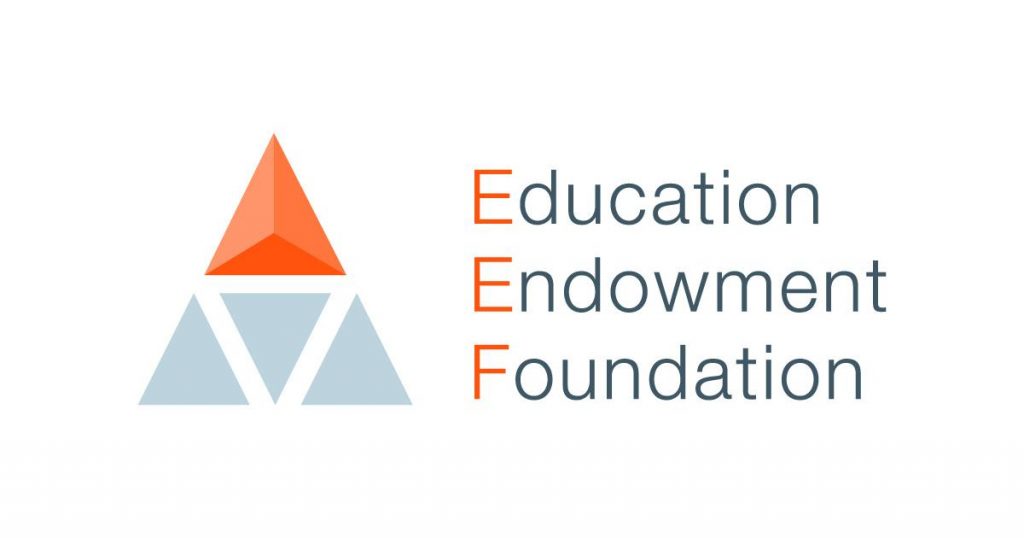 However, the evidence base for specific SEND interventions is weak in secondary schools, because very few high-quality evaluations have been conducted with this age group. The project seeks to address this gap.
However, the evidence base for specific SEND interventions is weak in secondary schools, because very few high-quality evaluations have been conducted with this age group. The project seeks to address this gap.
This is positive on a number of levels. The recognition that good teaching is central to progress is well understood. Understanding that good teaching is key to effective inclusivity is less so. Other factors, the recognition of individual difference, the fact that disadvantage is not only shaped by ethnicity or socio economic status also play a role. Fundamentally, pupils with SEN continue to experience the unintended consequences of comparative accountability. Where pupils are categorised by assumptions of average, below average and gifted pupils, the danger is that students with SEND are too readily associated with below average. Their work is dumbed down and expectations are reduced. And teachers themselves can lack the confidence to recognise individual difference and to adapt teaching to provide a clear path to the curriculum. It’s time to bust myths about pupils and how they learn. EEF is feeling increasingly clear about the value of looking at how evidence can support understanding of ‘what works’ for ALL, not just for the majority of pupils. This willingness to focus on SEND is an exciting opportunity for the use of evidence that informs change; a change in teaching and in school culture.
SEN Support is about removing barriers to learning.
The term SEN support describes how needs will be met for pupils who have an identified special educational need but who do not have a statutory Education Health Care Plan. If there is evidence to show that a pupil with SEN is not making as much progress as they could be, then the school will put the pupil on the SEN register for ‘SEN Support’ sometimes referred to in schools as the ‘K’ list.
The Code of Practice tasks schools with removing barriers to learning for these pupils and putting effective provision in place. It makes specific recommendations about ‘how’ this should happen over a four-part cycle through which earlier decisions and actions are revisited, refined and revised with a growing understanding of the pupil’s needs and of what supports the pupil in making good progress and securing good outcomes. It’s called the graduated approach. It draws on more detailed strategies, more frequent review and more specialist expertise in successive cycles in order to match interventions to the strengths and needs of children and young people.
It’s an exciting development in a mainstream environment as it offers an approach to good teaching for all pupils rather than one we adopt only for pupils with SEN. As Dylan Wiliam has shown us, small steps formative assessment is key to good teaching.
What will the schools gain from involvement?
Clarity! The best outcomes are from the schools who really apply critical lens to their self review, seek change and improvement across the school by involving all staff from canteen staff to headteacher, pupils and parents. Often it is the stronger schools that are prepared to do this. We have found that coaching from the research project directors can offer additional confidence and support the schools professional criticality. We want to scaffold the process and support schools to take those difficult steps. Moving beyond your comfort zone takes bravery, and good planning around SEN support really can help shift understanding from an operational standpoint to a strategic perspective.
What kind of examples of concrete innovation come through?
First of all, asking which intervention to use to help pupils make progress usually isn’t a sufficiently nuanced or contextual question. Intervention suggests SEND provision is made up of bolt on to what is usually available in the classroom. Secondly, we have to be careful about approaches that tweak or seek to change the pupils rather than what they are capable of. At a whole school level, working with parent led groups can be very effective. Upskilling Teaching and Learning for SENCOs and creating opportunity for SENCO and T&L leads to work together helps to reshape priorities. A review of CPD to encourage SEND as intrinsic to teaching is another route. This doesn’t mean there aren’t discreet SEND sessions in school CPD, but a leadership position on making SEND central to school improvement makes a difference.
We have been working with Headteachers to make sense of evidence from recent national research including the NAO Report and the SENCO workload survey as well as the increasing number of reports emerging that relate to exclusions. This highlighted both a need and desire for SENCOs to focus more on capacity building and less on the burdensome paperwork associated with SEN.
In summary
The SEND Review is a school improvement tool strengthening pupil outcomes through an explicit lens on struggling learners addressing provision but most importantly, effective pedagogy. It allows schools to navigate the journey from operational to strategic development planning for SEND.
Secondary schools can still sign up to be part of the SEND Review Trial. The deadline for applications is April 3rd.
Contacts:
Margaret.m@nasen.org.uk or project manager Helen Prosser helenp@nasen.org.uk
PhD Studentship – Applications open
 Dr. Steven Papachristou (UCL Institute of Education), Dr. Emma Meaburn (Birkbeck) and Prof Flouri (UCL Institute of Education) are advertising a fully funded PhD (October 2020- September 2023).
Dr. Steven Papachristou (UCL Institute of Education), Dr. Emma Meaburn (Birkbeck) and Prof Flouri (UCL Institute of Education) are advertising a fully funded PhD (October 2020- September 2023).
The project titled ‘Educational attainment, inflammation and depression: shared genetic aetiology or causal pathway?’ will make use of data from the Understanding Society cohort to test if educational attainment, inflammation and depression are linked because they share genetic underpinnings.
Full details are available here.
The closing date is 31st of March 2020.
Lust & Love explained by the Me, Human team
Do you believe in love at first sight?
Do you think that opposite attract?
Can Paracetamol help you cure your heartbreak?
Sitting at a dimly lit table full of glittery hearts and candies, I consider Gilly Forrester’s questions to the audience. Yes, No, No, I reply. Having a look at the rest of the audience – maybe in the hope of finding my soulmate, I can see that some people do not agree with me. The tone is set: what I will hear tonight will challenge my preconceptions.
Joining Gilly on stage, we have Catherine Loveday (no, she did not change her name for the event, it is just very appropriate), and Simon Green. Catherine is a Professor at the University of Westminster, and is here to reveal the physical chemistry of lust and love. Simon is a retired Senior Lecturer at Birkbeck University, and will tell us about the evolutionary functions of lust and love, in humans and other animals. Gilly Forrester, who created this overall event, is a Reader at Birkbeck University, and will talk about other species, such as birds and white wales – thereby also considerably raising the “cuteness” vibes of this event.
But let’s start with us, humans, and let’s clarify what we mean by Lust and Love.
Catherine explains 3 different states:
- Lust, or physical, sexual attraction. One of the 7 deadly sins. Bluntly speaking, this is what is behind hook-ups and one-stand partners – multiple people can satisfy our needs here.
- Romantic love, or passion. Here, the attraction is still physical but we select one person to be in a relationship with. Our brain is secreting addictive dopamine, noradrenaline, and serotonin. Have you ever felt so much passion that you could not eat anymore? Well, this is because heightened rates of noradrenaline are also related to loss of appetite.
- Attachment, or companionate love, is a calm, secure long-term relationship with a “partner for life”. Here, our brain secretes oxytocin, the “cuddle” hormone. It is also related to maternal love.
These three states are not mutually exclusive, but since attachment develops over time, we might reconsider our first question “Does love at first sight exist?”. Well, maybe we should instead say: “Lust at first sight”?
Catherine, on the left, explains the three states of lust and love
And what about gender differences here? Simon mentions that the costs and benefits of lust and love might be evolutionarily different for men and women. Whereas men would benefit from having many different sexual relationships (spreading their genes), women are more constrained by the costs of pregnancy, needing to carefully select the good partner (i.e. good genes), while also providing resources and security to the future offspring. Following from that, as men have no guarantee that an offspring is theirs (they are not pregnant), they would be particularly sensitive to sexual infidelity, whereas women would need to rely on attachment and security, thereby being sensitive to “attachment” infidelity. Should I just say here that we are talking about evolutionary psychology, so if you feel some outrage here (for god’s sake, we are in the 21st century!), just imagine a world with more pregnancy risks (without condoms and contraceptive pills) – the evolution of species is much slower than that of technology, and we talk about the reproduction of genes here.
What kind of signs do we use to select a good partner then? To try and figure it out by ourselves, we answered a little survey, selecting our physical preferences among different options. I happily did it – the answers were anonymous, right(?!). Few indicators came out when merging the answers from the audience, that correspond to what is usually found in the general population. For example, women are considered more attractive if they have long legs, compared to their upper body (hence maybe the power of heels), and if they have a narrow waist and larger hips. When it comes to judging men, on the contrary, a more balanced legs-to-body ratio is preferred (legs a bit longer than the torso but not too much). For both sexes, indicators of good health are usually preferred. This includes symmetry, and having a rather thin face. Of course, in social interactions, as well as on dating apps, physical indicators come along with information about a person’s social status and personality. This also influences attractiveness. Creativity also enhances a man’s attractiveness from a woman’s perspective – much more than the other way around. So sadly, if I create a profile on a dating app, mentioning that I am playing music might help less than putting a picture of me in a fancy dress…
A funny fact though, is that whereas women’s choice of attractive mate age increases with their own age (red line on the picture below), men’s preference for mate choice never exceeds about 20 years of age – regardless of how old they are (blue line).
Let’s try and justify this: if we consider that older women have had, on average, more sexual partners, dating younger women with less experience would help men to be sure that the offspring is theirs. On the woman’s side, a man who can provide resources would gain attractiveness as he can provide security for the offspring. Again, we are talking about evolutionary psychology here, and customs have changed in western industrialised countries. A key challenge of these theories is to make sense of different patterns of relationships (e.g. homosexual, pansexual relationships) and social configurations (e.g. taking into account the availability of contraception methods, and the increased independence of women in society). Maybe these evolutionary theories, focused on very long time frames, could be complemented with social and cultural theories. However, they can help us to understand what were share with other animals.
Inasmuch as we fancy talking to our cats and dogs, it is hard to know what is going on in their heads: Do they feel lust, love, companionship? Back in the 19th century, a strong movement in Psychology, called Behaviourism, focused on what was observable for an external eye, that is to say, behaviour, acts. Taken to an extreme, it would mean that we could infer love in animals to the extent that they show similar behaviours to ours. But it is not only about animals being similar to us. We are also similar to animals, since our brain is the repository of evolution.
The 3-brains theory posits the existence of 3 layers in the brain (for further clarifications, see this page):
- The reptilian brain, shared with various, and quite remote species such as amphibians, or reptiles. It controls our vital functions (such as breathing, body balance) and primal emotions (seeking for food and partners, lust, rage).
- The limbic brain is shared with some reptiles and mammals. It involves the regulation of emotions that are more related to attachment: the urge to care for an offspring, to have long-lasting relationships. It can record memories of behaviours that produced agreeable and disagreeable experiences.
- The cortex, often highlighted as the most developed human part, is actually present in other species as well. What seemed to have particularly expanded in primates and humans is its connections with other areas of the brain. The cortex helps us to regulate our behaviour and refrain impulses, but it would not work without foundations, in other words, without the reptilian and limbic brains!
So, in answer to the question: “Do we experience the world in a similar way than other animals?”, a tentative response would be: could be, for lust and romantic love.
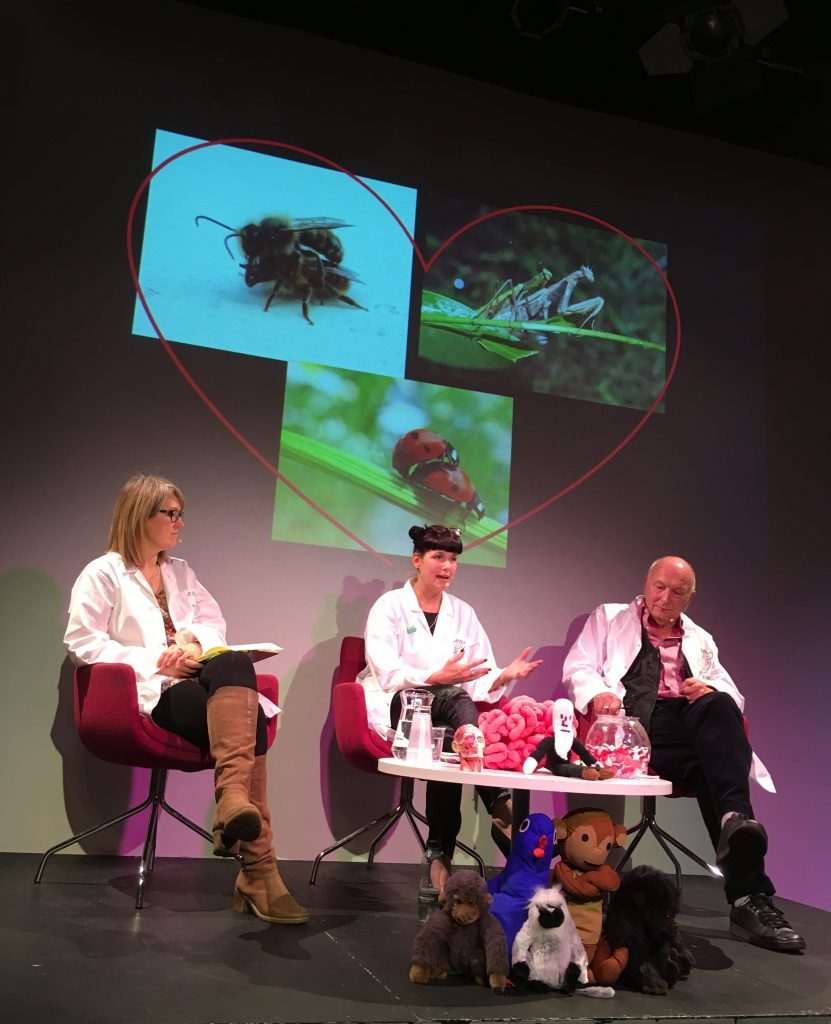 This is supported by the study of brain chemistry. Oxytocin is not only secreted by human brains. In animals, this hormone is related to pair bonding, which basically means pairing to handle resources and raise offspring. Pairing fosters health and survival. The good news is that the secretion of oxytocin, in both humans and animals, enhances the attractiveness of our current mate, and reduces the attractiveness of other mates. Another good news is that the physical symptoms of a heartbreak can be alleviated via paracetamol – of course, this is not the panacea to cure any psychological and mental health issue.
This is supported by the study of brain chemistry. Oxytocin is not only secreted by human brains. In animals, this hormone is related to pair bonding, which basically means pairing to handle resources and raise offspring. Pairing fosters health and survival. The good news is that the secretion of oxytocin, in both humans and animals, enhances the attractiveness of our current mate, and reduces the attractiveness of other mates. Another good news is that the physical symptoms of a heartbreak can be alleviated via paracetamol – of course, this is not the panacea to cure any psychological and mental health issue.
At this stage, my brain was a bit smashed by all these new ideas – and by my two glasses of wine. So, what did I take from the event? First, next time I am heartbroken, I will go to the chemist, pull out a 50p coin and buy some Paracetamol. Second, I might stop making fun of my mum when she infers mental states in cats.
The next Psyched! event is about Sex differences. You can book your place here.
Don’t forget to follow the team at @Me__Human
Written by: Jessica Massonnié
The NeuroSENse project – your help needed!
The Centre of Educational Neuroscience and the UCL Institute of Education would like to invite you to participate in a questionnaire investigating your beliefs about the brain and people with special educational needs (SEN).
We would like as many people as possible above the age of 18 years old to take part in our study.
This short questionnaire will help us gain insight on what the general population knows about these topics and potentially lead to the development of targeted educational resources.
All answers will remain confidential and anonymous.
Click the link below to access the survey:
Dr. Joni Holmes – Transdiagnostic approaches to understanding why children struggle at school
Dr. Joni Holmes is the Head of the Centre for Attention Learning and Memory (CALM) at the Medical Research Council’s Cognition and Brain Sciences Unit, University of Cambridge (CBU). Research conducted in CALM aims to illuminate the cognitive, neural and genetic underpinnings of learning difficulties with a view to developing targeted interventions and identifying risk factors for long-term difficulties.
In her CEN talk, Joni shared results from a recent study on 800 struggling learners, that were referred to the CALM by a variety of practitioners (e.g. special needs co-ordinators, paediatricians, child psychologists and psychiatrists, and speech and language therapists). Joni and her team examined the nature of children’s difficulties, and the mechanisms underlying their reading, spelling and maths performance.
You can watch the full seminar here.
Full details about the study are available in the following papers:
Siugzdaite, R., Bathelt, J., Holmes, J. & Astle, D. (2020). Transdiagnostic brain mapping in developmental disorders. Current Biology.
Holmes, J., Guy, J., Kievit, R., Bryant, A., & Gathercole, S.E. (2020). Cognitive dimensions of learning in children with problems in attention, learning and memory. Journal of Educational Psychology, under review.
Mareva, S., the CALM Team, & Holmes, J. (2019). Transdiagnostic associations across communication, cognitive and behavioural problems in a developmentally at-risk population. BMC Pediatrics, 19, 452-462.
Holmes, J., Bryant, A., & Gathercole, S. E. (2019). Protocol for a transdiagnostic study of children with problems of attention, learning and memory (CALM). BMC Pediatrics, 19(1), 10.
Astle, D. E., Bathelt, J., CALM Team, & Holmes, J. (2018). Remapping the cognitive and neural profiles of children who struggle at school. Developmental science, 22(1), e12747.
You can also read Joni’s team paper for TES, and a recent BBC report on the work carried out at CALM.
The CALM clinic also provides free resources for professionals supporting struggling learners.
Spatial Cognition and LEGO (BLOCS Project)
It is hard to think of an everyday activity that doesn’t involve the use of spatial skills. Whether we’re reading a map or packing a suitcase, we need to understand the location and dimensions of objects and their relationships to one other. Spatial ability varies across children, and predicts adult expertise in Science, Technology, Engineering and Mathematics (STEM). This is unsurprising, given the many examples of spatial skills that are integral to STEM professions (for example understanding graphs and diagrams). Recent research has found that it is possible to train spatial skills, and that this in turn can improve achievement in STEM subjects.
The BLOCS project (standing for Block Construction Skills for Mathematics) aims to determine how LEGO® is related to and can be used to improve maths achievement in seven to nine year-olds. Lego is not only a practical choice, but research has shown that it has the capacity to help children reach their mathematical potential. The project will also explore how digital technologies (a part of many children’s everyday activities) can improve spatial abilities. Specifically, it will identify how both physical Lego and digital Lego construction activities can be used to improve spatial abilities and measure the impact that this has on maths ability. This series of research studies is funded by the Leverhulme Trust.
Publications
You can learn more about the project by reading the article on page nine of the Leverhulme Trust Newsletter.
Communicating educational neuroscience to a wide audience
On Thursday 6 February, Dr Annie Brookman-Byrne from The Psychologist magazine spoke at the CEN seminar. Annie is an alumnus of the CEN, having completed her MSc, PhD, and a post-doc in the centre, leaving in 2019. Here she summarises the discussion that was had around her experiences communicating educational neuroscience to a wide audience.
Who do we need to communicate with?
Teachers
The key group that we need to communicate with is teachers. Ideally, we hope to share strategies from research that teachers can use in the classroom, but teachers may also simply benefit from understanding more about neuroscience. We might speak to teachers about the field of educational neuroscience, trying to get them on board (see this example of a paper I wrote for teachers with Michael Thomas), or we might share our own research and results with them, particularly if they’ve been part of our research.
There’s increasing interest in getting educational neuroscience, or the science of learning, into initial teacher training. Paul Howard-Jones and his team have identified three categories of learning that they teach to secondary teachers on their programme – these are engagement, building knowledge and understanding, and consolidation of learning. They explain these concepts from a neuroscientific perspective and argue that an understanding of these mechanisms helps teachers to understand why things they try in the classroom do or don’t work. Kendra McMahon and Pete Etchells have adopted a different approach in their primary teacher training, focusing on neuromyths, and enabling teachers to critically understand educational programmes. They aim to help teachers become ‘critical consumers’ of the evidence.
While many of us would like all teachers to engage with us, I am increasingly aware that we need to ensure that teachers don’t feel like they have to engage. Teachers are extremely busy people, often facing many stresses in their jobs, so my aim is to be ready for when they do seek information, providing tools and strategies, rather than strict guidelines. I helped to run the Science of Learning Zone, part of I’m A Scientist, Get Me Out Of Here, which allowed teachers and researchers to communicate with each other about science relating to the classroom. It was an easy way for teachers and researchers to interact, since it was all via computer.
Students
Students are another key group that educational neuroscientists communicate with. Sometimes we’re sharing the results of research that they’ve participated in, or we might just be passing on information that has potential benefit for them (e.g. inhibitory control, sleep, diet, learning techniques). When we’re telling students about these, we have to be careful not to make them anxious, for example through over-emphasising the importance of sleep, which they may have very little control over. But overall, I’d hope that information given to students would ultimately be helpful and potentially reassuring – for example, learning that IQ fluctuates may be encouraging to those who feel they are performing less well than their peers.
I participated in a play for adolescents, created by Cardboard Citizens in collaboration with Iroise Dumontheil, about brain development that aimed to help students understand their own behaviour, and hopefully change it. The play involved a series of events that went badly for the characters, and by the end of the play they were near homelessness or self-harm. The teenagers in the audience were asked to choose a scene where a character could have acted in a different way to change the outcome. Each performance had a neuroscientist present, to explain why the character behaved in a certain way, what was happening in their brain, and why a new strategy might be better. The play introduced the idea of metacognition: the idea that we can think about our thoughts and feelings, and try to change them.
Go to the I’m A Scientist website to look out for opportunities to talk to school students online about science.
Parents
In between students and teachers, researchers are indirectly connected to parents, who receive information about research projects that are carried out in schools. Information sheets typically only include very specific information about one study. For me, that’s about the extent of my engagement with parents. Chloë Marshall spoke about a UCL event for engaging with parents, where everything is set up by the university to make it easy for academics. Jessica Massonié suggested that an extension of the CEN’s Bright Sparks public engagement event could include talking to parents about key topics in educational neuroscience.
Academics
The final group on my list of people to communicate with about educational neuroscience is other academics, which I consider to be a genuine challenge for us. There are of course those who believe that education and neuroscience are not related (or, I would argue, who don’t really understand what educational neuroscience is). Part of my motivation for writing about educational neuroscience in The Psychologist (long before I started working there!) was to convince other academics that educational neuroscience is worthwhile. But there are also those who can be defensive, and think we’re telling them they must take an interest in education. Just as all teachers needn’t engage with educational neuroscience, all researchers needn’t take an interest.
Policymakers
At the end of the discussion, Michael Thomas pointed out that I was missing a key group – policymakers. I have no experience of communicating with policymakers, and Michael spoke of the challenge in communicating with this group. Policymakers want things that will work, which they will then mandate. This is tricky for us, because our aim is to empower teachers, not to mandate. But, Michael said, if we don’t do it, others will (and they do). So we can’t just keep saying that the evidence is premature, we need to use what we do know. For example, we know that socioeconomic status is more influential on academic outcomes than school and teacher quality – that kind of information could be used to inform policy.
How can we communicate?
There are many different ways of communicating with these audiences, including blog posts (which are so easy to do!), talks, podcasts (such as the Learning Scientists’ podcast). If you have a bit of a budget, you can do even more exciting things like the play I mentioned above. I was lucky to get funding for a project with Georgina Donati – we created a film about the adolescent brain for teachers. The film is hosted on a website with loads of information about brain development. We created the film following a focus group with teachers who gave us really helpful feedback on our ideas which really helped us decide how to frame the film. In-person discussions are a really good way of communicating, and at the 2018 SIG 22 conference we used an open space format, allowing any attendee to pose a topic for discussion.
A number of people mentioned other forms of communication, including INSET days, workshops, and BNA resources for teachers. Overall I concluded that a diversity of format is good for reaching different audiences who will have different preferences for how and when to talk with researchers.
Challenges in communicating educational neuroscience
Sharing your opinions, and putting your writing into the public domain can be scary, especially when writing about individuals. What if you’re wrong? What if someone argues with you on Twitter and you need to respond? This can be very off-putting, especially at the beginning… But you don’t have to respond to every comment, and it’s okay to disagree with people. In my experience it’s very rare that people actually want to get into an argument.
A key challenge for me is the lack of feedback from many of these activities. How do you know that you’ve reached your intended audience? And how do you know if you’ve made anything change? I get feedback mostly through Twitter, and only from those who have strong opinions, and typically academics rather than teachers. One person in the discussion said that teachers often expect a strategy or top tip, so might not be impressed when they hear from us that there are no quick fixes. I do find that a lot of my blog posts end with a variation of ‘we don’t really know the answer yet’ so I can understand that this is frustrating. Andy Smart suggested that I follow more teachers on Twitter to help my voice get heard by them. Michael Thomas pointed out that web analytics can be useful for at least seeing how many people are reading posts and how they’re getting to your site.
Benefits of communicating
Despite these challenges, it really isn’t all bad! Even if all you do is write one blog post, that’s one thing that people can read when they search for you. I started blogging when I was applying for PhDs, and my main motivation was that I wanted anyone who googled me to be able to find something that I’ve written. I thought that if I did just three a year, then within a couple of years I’ve got six pieces for people to read. It’s also great writing practice, which will be useful – Iroise Dumontheil said that writing in an accessible style is increasingly important in grant applications. One thing I love about blogging is that it’s so fast. You might have an idea one afternoon, sit down to write it for a few hours, then it’s online by the evening. Communication can also allow you to be creative.
Getting teachers’ and students’ opinions may help to inform your research. You may start new collaborations with particularly keen people you communicate with. It can also be useful to get feedback from other academics on your work – I’ve heard a few educational neuroscientists say that communicating with other academics has made them think harder about the aims and remit of the field, which has ultimately been a good thing.
My back catalogue of blog posts has helped me to remember what I was thinking in the past – it’s been a useful resource for myself that I can draw on. It can also help you keep up to date with the field – I’m always on the lookout for the latest educational neuroscience work that might be interesting to write about. I’ve also met new people and found new opportunities through communicating, such as getting involved in projects and being invited to interesting events. Ultimately you might end up enjoying it so much that you end up making a career out of it!
Getting started
If you’d like to communicate educational neuroscience and you’re not sure where to start, I’d recommend creating a blog. You could make your own, or find friends in a similar area. I use blogger, which is very easy to set up. You could also create a profile on the NPJ Science of Learning community, which is also easy to use and will help you reach a wider audience. You could think about submitting your work elsewhere – to the Jacobs Foundation Blog on Learning and Development (BOLD) for example, or of course The Psychologist!
Write just 500 words, on something that you know about, perhaps something that might seem obvious to you but wouldn’t to others. If you’re stuck for ideas, then you could review a podcast or a book, report on an event, or write an opinion piece. I also look out for pieces in the news that I can write a response to (even if it’s not explicitly a response).
You could also share your ideas on social media, perhaps using a Twitter thread, and the hashtag #edneuro so that we can all find each other’s posts.
Remember to use simple language, and that it’s not an essay. Very often you can just drop instances where you’ve said “Research has shown that…”, as you’ll be linking to the source anyway. At The Psychologist we are working on a guide to writing science pieces for a wide audience, so look out for more advice on writing soon!
Thanks to everyone who joined in with the discussion.
Lipreading training in deaf children
Let’s tell you a bit more about the research projects carried out at the CEN.
Today, we will share the outcomes of an intervention study led by Prof. Mairéad MacSweeney at UCL, and aiming at improving deaf children’s lipreading skills.
Many deaf children find learning to read to be very challenging. This project evaluated a computerized speechreading (lipreading) training program in a randomized controlled trial to determine (a) whether it is possible to train speechreading in deaf children and (b) whether speechreading training results in improvements in phonological skills and, subsequently, single word reading skills.
Sixty-six deaf 5- to 7-year-olds children participated in the study. They became deaf before they were 12 months of age. They either took part in a speechreading intervention, or in a maths training intervention (active control group). The interventions consisted of computerised games that were designed to run across forty-eight 10-min sessions. Children were engaged in one session per day, 4 days a week, for 12 weeks.
Screenshots from the computer games used in the speechreading (a, b) and maths (c, d) interventions.
In the speechreading intervention, children saw a silent video of a model saying a given word, and had to choose the corresponding picture from a choice of four pictures. They also had to match visual speech patterns with letters and words. For example, seeing the video of a model speaking a phoneme (e.g, ‘p’) and choosing the corresponding letter. In the maths training intervention, children were presented with counting and arithmetic exercises.
Results showed a significant benefit of the speechreading training intervention on speechreading and also on their speech production accuracy. Importantly the speech production measure took into account both auditory speech and visual speech (i.e., articulation accuracy). The benefits of speechreading training were stronger when only children who completed the full 48 sessions were included in the analyses. These benefits however did not filter through to result in improved single word reading.
Although no effects were seen on reading skills, practitioners and parents of deaf children are likely to be interested in a game that can lead to speechreading gains in deaf children. Future research should explore whether interventions are more efficient for children whose speechreading skills are particularly low and also whether a longer training period would lead to subsequent gains in reading.
Paper:
See a demonstration of the games here:
Funders: Wellcome Trust, Economic and Social Research Council
Éadaoin Slattery – Keeping Score! The development of a school-based attention training programme
Éadaoin Slattery is a PhD student at the University of Limerick. She is interested in the measurement and enhancement of cognition, with a particular emphasis on sustained attention, working memory and their interrelations. Her PhD research focuses on the development and evaluation of “Keeping Score!”, a novel, school-based attention training programme designed to improve sustained attention and working memory in children with attentional difficulties.
In her talk for the Centre for Educational Neuroscience, she first highlighted the relationship between cognitive assessments of sustained attention among primary school students, and teachers’ and parents’ reports of inattentive behaviour in everyday life – a first step in bridging the gap between lab-based research and school practice. Second, she reported the strong associations between: a) verbal IQ and working memory (e.g. the capacity to keep multiple pieces of information in mind), and b) word reading and reading comprehension. Finally, she presented an intervention, Keeping Score! aiming to improve children’s sustained attention and/or working memory. The intervention consisted in children playing table tennis, while keeping track of the scores. Although the programme seemed promising in terms of the ease to implement it in school settings, it did not yield significant improvements in working memory and sustained attention. Together with the attendees, Éadaoin discussed the methodological and practical challenges she faced (e.g. difficulty to have big sample sizes, to dissociate motor skills and attentional skills in the training programme). A lot of food for thoughts for fellow EdNeuro researchers!
You can watch the entire talk here.
Follow Éadaoin on Twitter @eadaoinslattery


